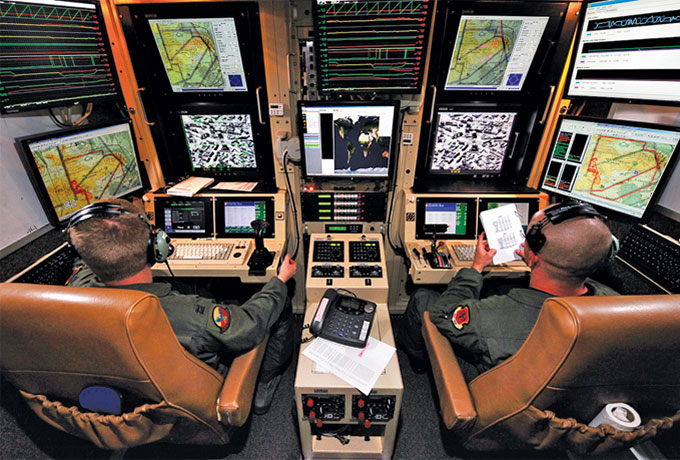Anyone traveling through large metropolitan airports can attest to the popularity of commercial air travel. Similarly, when one views the daily worldwide news, it’s evident how interdependent the defense industry is with foreign affairs. Like most sectors, demand for air travel is influenced by the state of the global economy and can show yearly volatility. But the overall trend line should continue to go up, barring a severe and long-term economic dislocation. Likewise, the overall trends are positive for spacecraft, in part driven by our insatiable appetite for mobile voice and data streaming services. Although the visual impact of aerospace is quite impressive, its economic effect on communities and regions is more difficult to quantify. This article examines the structure and economics of the industry and some implications for those on the buy side – companies and consultants, for example – and on the sell side, such as economic development agencies and communities.
Aerospace combines the aviation (within the atmosphere) and space (above the atmosphere) industries and is divided into two sectors, commercial and defense. Although they are intimately related, each sector follows its own demand, and both operate independently. The combined aerospace industry also operates in specialized clusters where skills, training, facilities, support services and demand converge. Although the industry is focused on primary aircraft assemblers and MRO (maintenance, repair and overhaul) facilities, its dynamics are notably different from automobile or other traditional manufacturers. Since aviation products are significantly more expensive than automobile parts, suppliers are not so tightly tethered to an assembly facility, and parts can be transported economically from a longer distance.
Consequently, aviation parts manufacturers have more leeway as to where they locate. Aircraft assemblers and MROs normally require or prefer an airport location, but most aerospace suppliers do not require airport facilities. Thousands of aerospace suppliers are distributed in all 50 states. However, over 50 percent of the jobs are centered in nine states: California, Washington, Texas, Arizona, Florida, Massachusetts, Connecticut, Virginia and Kansas. As unconventional as it sounds, many aviation defense employees traditionally remain more loyal to federal contracts rather than the company that employs them. Should a defense contract be rebid and another company receive the contract, the skilled labor is likely to follow the work to the new company. Therefore, aerospace industry clusters tend to work to the advantage of the employees as well as the industries.
Aerospace is one of those coveted industries that offer valuable advantages to a local community and region, including high wages, stability, steady growth and high-demand skills. In the US, aerospace wages average $80,175, nearly twice the average manufacturing wage of $44,410. The industry employs over 1 million and stimulates indirect employment of an additional 2.5 million. Put simply, 2.6 indirect jobs are created by each aerospace job. Furthermore, 93 percent of direct aerospace jobs created are permanent, and 92 percent of the employment is classified as professional or skilled – a very desirable consideration for any community or state, according to Deloitte Aerospace & Defense in the USA, March 2012.
Opportunities for Investors

The top aviation states recognize the economic benefits of aerospace companies and have created favorable, industry-specific tax incentives, grants and specialized training facilities to keep them and to help grow their industry cluster. Yet, because the aerospace industry operates unlike most traditional manufacturers, it is often misunderstood and neglected by some economic developers, communities and states. However, some areas are catching on fast. For example, Alabama, Mississippi and Louisiana have partnered with Florida and formed a Gulf Coast Aerospace Alliance to compete for these quality jobs and expand their industry clusters. The four-state marketing alliance and their governors attend and market their combined states at the Paris and Farnborough Air Shows. Many industry observers believe this collaborative approach helped Alabama land the much-coveted Airbus assembly facility in Mobile that will greatly enhance the entire Gulf Coast’s aerospace cluster and create thousands of new job opportunities.
As a favored industry, aerospace commands a buyer’s market among states and communities, resulting in very lucrative incentives available to new and expanding aerospace operations. The leverage held by expanding aerospace industries can be converted into training facilities, special incentives and favorable assistance from both communities and states. If you are a decision maker within the aerospace industry, be aware of the advantage. It can result in a more skilled work force, lower taxes or other incentives and ultimately sharpen your area’s competitive edge.
Opportunities for Communities
Aerospace companies generate very high economic benefits to communities, regions and states that attract them and help them grow, thanks to the sector’s growth and positive long-term outlook, high wages and skills and education requirements. Unlike some “heavier” industries, aerospace has wide appeal to elected officials and citizens, and this often makes it easier for them to rally behind economic development organizations’ efforts to market and attract them.
However, the aerospace industry is not for all communities. Aerospace projects generally have specific and demanding location criteria. Most aerospace companies will look very closely at the educational system in an area, especially in the STEM (Science, Technology, Engineering and Mathematics) areas. In light of the attractiveness of the industry and competition for investment, it can help for communities to get “certified for aerospace investment.” Various organizations, states and consultants offer this service – sort of like a pre-flight checklist. The certifying entity verifies and describes how well a community matches the location criteria for most aerospace projects. This helps reduce the anxiety and risk companies and consultants go through when finding a location for new or expanded operations.
Opportunities for investors and communities abound in the aerospace industry, although the competition to win aerospace projects is intense. Since the industry is global in nature, marketing costs can be higher for communities compared to other industries. Projects like Boeing’s new assembly plant in N. Charleston, S.C., and Airbus’ decision to locate near Mobile command the front pages, but tiered suppliers may not be tied to a particular assembly plant and therefore can locate in many different areas. Developing a good plan and working it successfully could find you jetting off in the morning to close a deal and returning home thousands of miles away in the afternoon to enjoy your favorite home-cooked dinner, all thanks to the aerospace industry!
Tucson Roberts is principal of Alabama-based Tucson/Atlantic Consulting and vice chairman of The Janus Institute.
Robert Pittman is founder and executive director of the Janus Institute.
